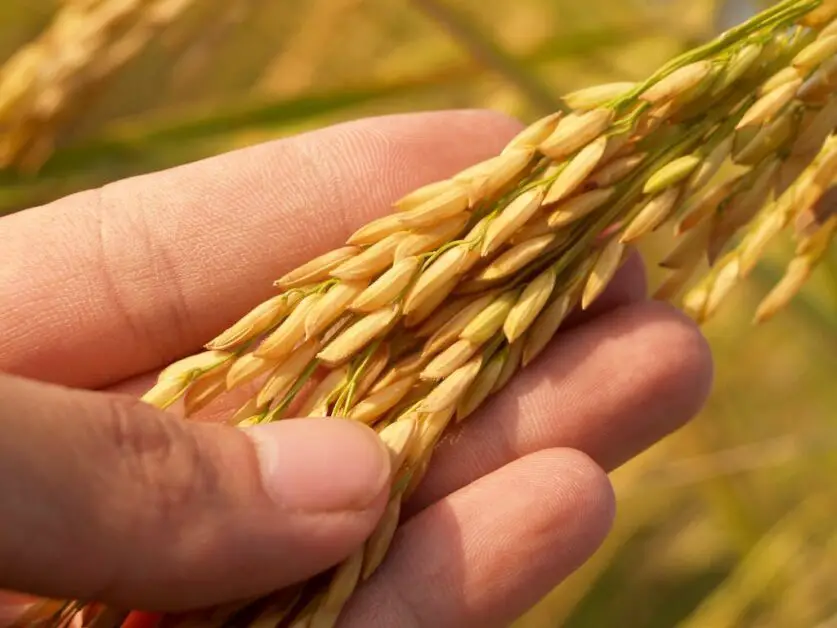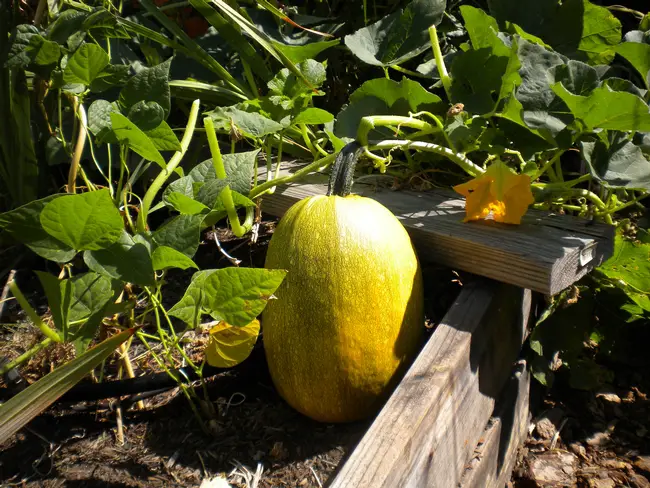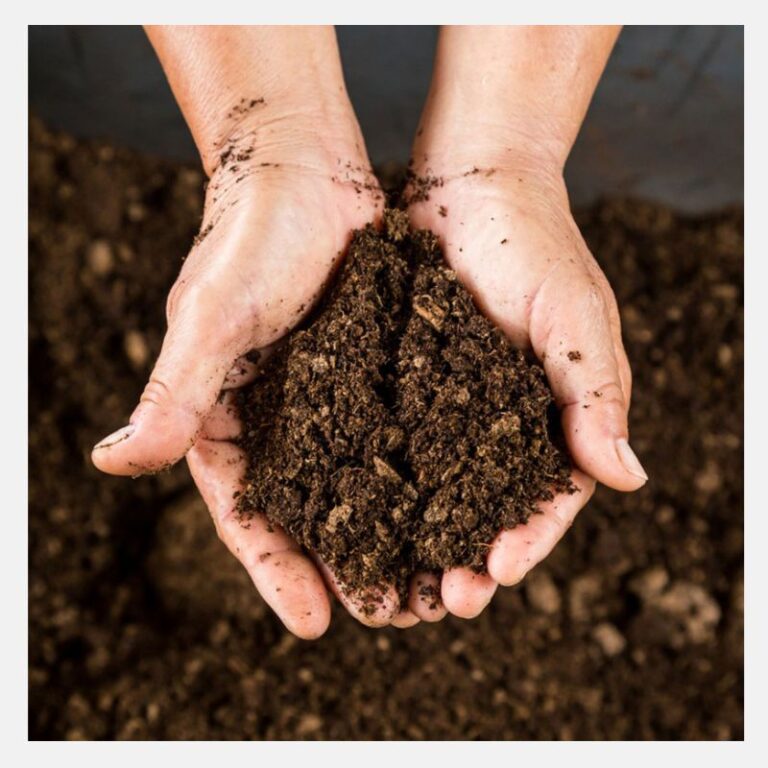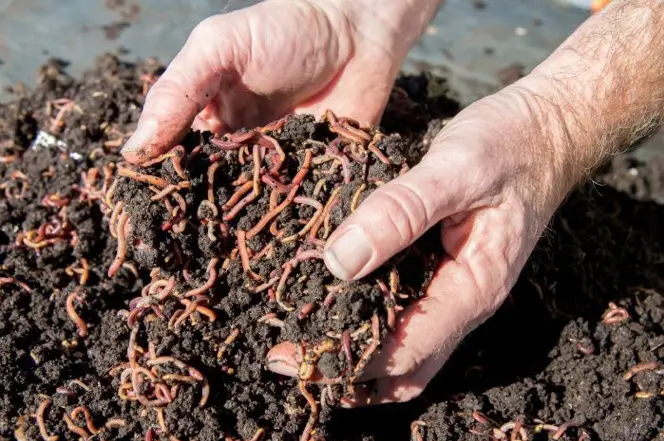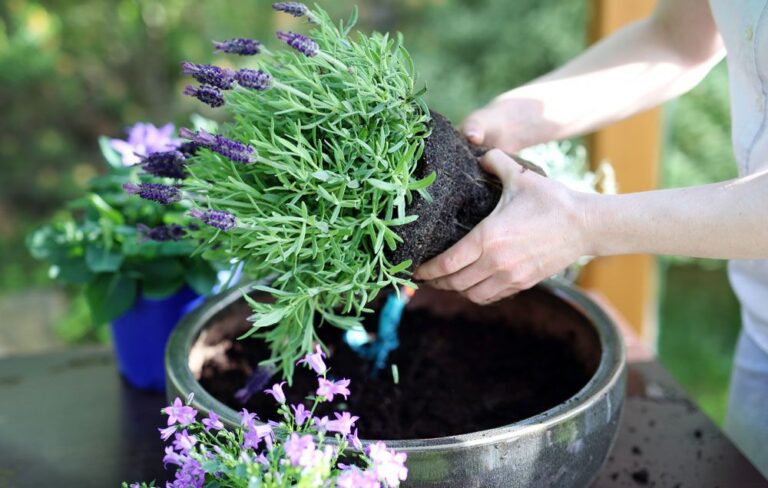Rice Hulls: 12 Surprising Uses You Never Knew About
Table of Contents
The Versatility of Rice Hulls: Uncovering Surprising Uses
Rice is a staple food in many parts of the world, but did you know that its humble hulls hold surprising uses beyond just nourishing our bodies? Rice hulls, the outer protective layer of the grain, are often discarded as waste. However, recent research has shed light on the versatility of rice hulls, uncovering a myriad of surprising applications across various industries.
One of the most notable uses of rice hulls lies in the agricultural sector. Due to their high silica content, rice hulls can be transformed into organic fertilizers that provide essential nutrients to plants. The slow-release properties of these fertilizers not only enhance soil fertility but also reduce the risk of nutrient leaching, making them an eco-friendly choice for sustainable agriculture. Furthermore, the abundant availability of rice hulls makes them a cost-effective solution for farmers, offering a viable alternative to synthetic fertilizers that may harm the environment.
In addition to their agricultural benefits, rice hulls have proved to be a valuable resource in sustainable construction practices. Their innate insulation properties make them an ideal material for thermal insulation. By incorporating rice hulls into construction materials such as bricks or panels, structures can be effectively insulated, reducing energy consumption and promoting a greener environment. Moreover, the lightweight nature of rice hulls contributes to decreased construction costs and improved structural integrity, making them an attractive option for sustainable building projects.
Stay tuned as we delve deeper into the remarkable uses of rice hulls. From eco-friendly packaging solutions to renewable energy sources, these versatile byproducts of the rice industry continue to surprise and inspire innovations across multiple sectors.
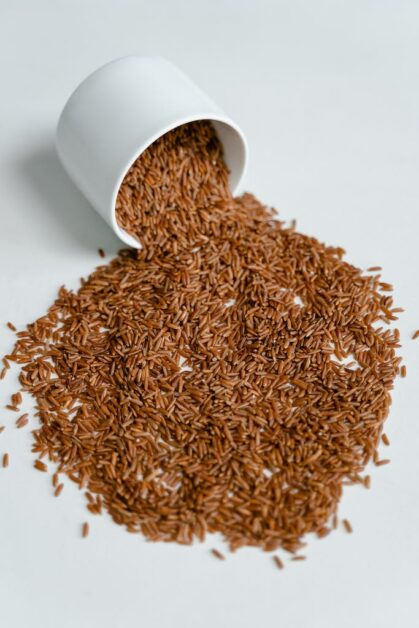
Enhancing the Agricultural Sector: Rice Hulls as Organic Fertilizer
Rice hulls, often considered an agricultural waste product, have proved to be a valuable resource in enhancing the agricultural sector as organic fertilizer. With their high silicon content, rice hulls provide numerous benefits to plants, promoting healthier growth and increased resistance to pests and diseases.
Silicon, an essential nutrient for plant growth, plays a vital role in strengthening cell walls, improving nutrient uptake, and enhancing tolerance to environmental stress. Rice hulls, being rich in silicon, release this nutrient slowly into the soil, ensuring a steady supply for plant uptake. This not only improves root strength and overall plant health but also increases resistance to pests such as aphids and mites that are deterred by toughened cell walls.
Furthermore, rice hulls act as an effective moisture regulator, helping to retain water in the soil for longer periods. This is particularly beneficial in regions with erratic rainfall or in dry climates where water conservation is crucial. Additionally, the porous structure of rice hulls allows for better aeration of the soil, preventing waterlogging and root rot, which can be detrimental to plant health.
Incorporating rice hulls into organic farming practices not only provides a natural and sustainable fertilizer option but also aids in reducing agricultural waste. Rather than being discarded as byproducts of rice production, rice hulls can be transformed into a valuable resource, enriching the soil and enhancing crop productivity. The utilization of rice hulls as organic fertilizer presents an environmentally friendly solution that supports both sustainable farming practices and the overall health of agricultural systems.
Sustainable Construction Practices: Utilizing Rice Hulls as Insulation Material
Rice hulls, often considered a waste product in the agricultural industry, have emerged as a sustainable solution for enhancing construction practices. With their impressive insulation properties, rice hulls have gained recognition as a viable material for improving energy efficiency in buildings. The lightweight and non-toxic nature of rice hulls make them an attractive alternative to traditional insulation materials.
One of the key advantages of using rice hulls as insulation material is their exceptional thermal resistance. In fact, studies have shown that rice hulls possess thermal conductivity values comparable to or even better than commonly used insulation materials such as fiberglass and cellulose. This means that incorporating rice hulls into the construction of homes and buildings can significantly reduce heat transfer, resulting in lower heating and cooling costs for the occupants.
Additionally, rice hulls are a renewable resource, making them an eco-friendly choice for sustainable construction practices. By utilizing a waste product that would otherwise be discarded or burned, builders can contribute to reducing landfill waste and carbon emissions. Furthermore, the production process of rice hull insulation requires less energy compared to traditional insulation materials, further reducing its environmental impact.
As the demand for energy-efficient buildings continues to rise, the utilization of rice hulls as insulation material holds immense potential for the construction industry. With their impressive thermal resistance and sustainable attributes, rice hulls not only provide a pathway towards improved energy efficiency but also contribute to a greener and more sustainable future.
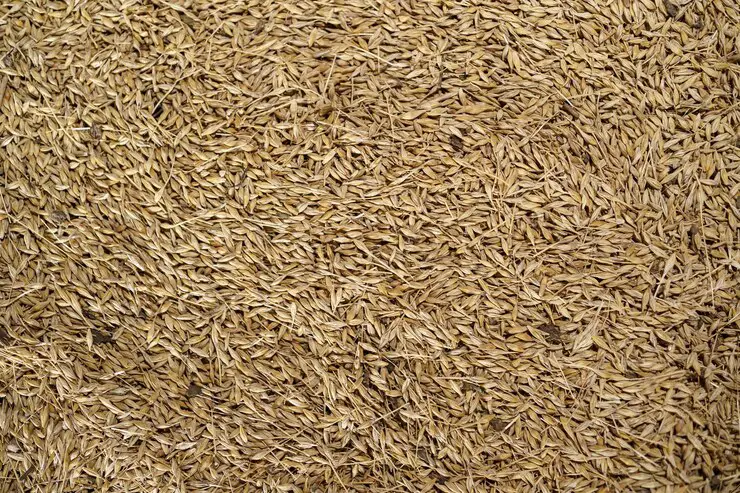
Eco-Friendly Packaging Solutions: Rice Hulls as Biodegradable Fillers
Eco-friendly packaging is becoming increasingly important in today’s world as consumers search for sustainable alternatives to traditional packaging materials. One surprising solution that is gaining traction is the use of rice hulls as biodegradable fillers. Rice hulls, the outer protective covering of rice grains, have long been considered a waste product in the agricultural industry. However, their unique properties make them an excellent option for eco-friendly packaging.
One of the key advantages of rice hulls as biodegradable fillers is their ability to decompose naturally without leaving harmful residues in the environment. Unlike traditional packaging materials such as foam or plastics, rice hulls break down easily and do not contribute to the ever-growing issue of plastic waste. Additionally, rice hulls are abundant and renewable, making them a sustainable choice for packaging solutions. By utilizing this agricultural byproduct, businesses can reduce their environmental footprint and meet the increasing demand for eco-friendly packaging.
Furthermore, rice hulls have superior cushioning and insulating properties, which make them ideal for protecting fragile items during transit. These natural fillers create a protective barrier around the products, absorbing shocks and impacts that may occur during handling and shipping. Studies have shown that packaging materials containing rice hulls can provide comparable or even better protection than traditional materials. This not only ensures the safety of the packaged items but also minimizes the likelihood of damage and returns, resulting in cost savings for businesses.
In conclusion, the use of rice hulls as biodegradable fillers offers a promising solution for eco-friendly packaging. Their ability to decompose naturally, combined with their cushioning and insulating properties, make them an ideal alternative to traditional packaging materials. With the increasing focus on sustainability and environmental consciousness, businesses can embrace this innovative packaging solution to meet consumer demands and reduce their ecological impact. As the search for sustainable packaging options continues, rice hulls prove to be a versatile and eco-friendly choice with immense potential.
Promoting Renewable Energy: Rice Hulls as Biomass Fuel
Rice hulls, the outer protective layer of rice grains, have emerged as a promising source of renewable energy. As the demand for sustainable energy solutions continues to grow, rice hulls provide a viable option for promoting renewable energy. Rice hulls can be converted into biomass fuel through a process called gasification, which involves heating the hulls in the absence of oxygen to produce a combustible gas.
The use of rice hulls as biomass fuel offers several advantages. Firstly, it helps reduce greenhouse gas emissions by providing an alternative to fossil fuels. According to a study published in the Journal of Cleaner Production, the combustion of rice hulls emits significantly less carbon dioxide compared to coal and other fossil fuels. This makes it an environmentally-friendly choice for power generation. Additionally, rice hulls are abundant raw materials, especially in rice-producing regions, making them a cost-effective and sustainable energy source. Their availability and affordability make them an attractive option for countries seeking to diversify their energy sources and reduce dependence on imported fossil fuels.
Moreover, the utilization of rice hulls as biomass fuel contributes to the circular economy. As a byproduct of rice milling, rice hulls are often considered waste and disposed of in landfills, causing environmental problems. By converting them into biomass fuel, we can transform a waste product into a valuable resource, reducing waste and promoting resource efficiency. This aligns with the principles of a circular economy, where waste is minimized, and resources are continually reused and recycled.
In conclusion, the promotion of renewable energy through the utilization of rice hulls as biomass fuel holds great potential. With its low carbon emissions, abundance, and contribution to the circular economy, rice hulls offer a sustainable and cost-effective solution for power generation. Embracing this alternative energy source can help countries reduce their carbon footprint, diversify their energy mix, and contribute to a more sustainable future.
| Aspect | Description |
|---|---|
| Source | Rice hulls are the outer covering of the rice grain, separated during the milling process. |
| Renewability | Abundant and renewable agricultural byproduct. |
| Availability | Widely available in regions where rice is cultivated, such as parts of Asia, Africa, and the Americas. |
| Energy Content | Moderate energy content per unit mass. |
| Environmental Impact | – Minimal greenhouse gas emissions when compared to fossil fuels. |
| – Utilization reduces waste and prevents methane emissions from rice hull decomposition in landfills. | |
| Economic Viability | – Cost-effective due to abundant local supply in rice-producing regions. |
| – May require investment in processing equipment for efficient utilization. | |
| Challenges | – Ash content may pose challenges in combustion and may require specialized equipment. |
| – Transportation costs may be significant if not produced locally. | |
| Applications | – Electricity generation in biomass power plants. |
| – Heat production for industrial processes and heating systems. | |
| Technological Trends | – Advancements in biomass combustion technology improve efficiency and reduce emissions. |
| – Research into ash management and utilization to mitigate challenges. | |
| Environmental Policies | – Supportive policies promoting renewable energy can incentivize the use of rice hulls as biomass fuel. |
Improving Soil Quality: Rice Hulls for Soil Amendment
Rice hulls, the outer layer of rice grains, have long been recognized for their potential to improve soil quality and enhance plant growth. As a soil amendment, rice hulls offer a range of benefits that can significantly impact the success of gardening and agricultural practices.
One of the key advantages of using rice hulls as a soil amendment is their exceptional ability to improve soil structure. Their fibrous and porous nature promotes better aeration and drainage, preventing soil compaction and allowing plant roots to access water and nutrients more effectively. This is particularly beneficial for heavy clay soils that tend to hold excess water, leading to poor root development and nutrient deficiencies. By incorporating rice hulls into the soil, gardeners can create a more loose and well-drained environment that fosters healthy plant growth.
Furthermore, rice hulls possess a high silica content, making them a valuable source of this essential plant nutrient. Silica is known to strengthen plant cell walls and improve their resistance to environmental stresses, such as drought, pests, and diseases. By incorporating rice hulls into the soil, gardeners can supply plants with an available and slow-release source of silica, ensuring their robustness and vitality. This natural and sustainable approach to silica supplementation can be especially advantageous for crops like rice, wheat, and sugarcane, which have high silica requirements.
In the quest for sustainable gardening practices, rice hulls have emerged as a versatile and eco-friendly solution to improve soil quality. Whether you are tending to a backyard garden or managing large-scale agricultural operations, incorporating rice hulls as a soil amendment can contribute to healthier and more productive plants. Consider harnessing the power of rice hulls to enrich your soils and experience the transformative effects on plant growth and overall gardening success.
An Alternative to Plastic: Rice Hulls in Manufacturing Composites
Rice hulls, the protective outer layer of the rice grain, have emerged as a promising alternative to plastic in the manufacturing of composites. With the increasing concern for plastic waste and its detrimental impact on the environment, finding sustainable materials for various industries has become imperative. Rice hulls, with their abundance and low cost, offer a viable solution to this challenge.
Composites made from rice hulls present several advantages over traditional plastic-based materials. Firstly, rice hulls are natural, biodegradable, and renewable, making them an eco-friendly option. Unlike plastic, which takes hundreds of years to decompose, rice hull composites will eventually break down into organic matter without leaving harmful residues. Additionally, using rice hulls in manufacturing composites reduces the reliance on fossil fuels, as plastic production is heavily dependent on petroleum-derived resources. By transitioning to rice hull composites, industries can significantly reduce their carbon footprint and contribute to a more sustainable future.
| Aspect | Plastic | Rice Hulls |
|---|---|---|
| Raw Material Source | Derived from petroleum | Agricultural byproduct |
| Environmental Impact | Non-biodegradable, contributes to pollution and landfill waste | Biodegradable, renewable resource, reduces agricultural waste |
| Manufacturing Process | Requires extensive processing, energy-intensive | Requires less processing, energy-efficient |
| Material Properties | Versatile, durable, but may degrade over time | Lightweight, can enhance biodegradability, lower strength compared to plastic |
| Cost | Cost of petroleum-based materials fluctuates, generally cheaper than alternatives | Cost may vary depending on availability, typically competitive or cheaper than plastic |
| End-of-Life Management | Contributes to landfill waste or requires recycling infrastructure | Can decompose naturally, may be composted or used for energy generation |
Enhancing Animal Health: Rice Hulls in Livestock Feed
Rice hulls, often considered waste products in the rice industry, offer surprising benefits when used in livestock feed. These fibrous outer layers of rice seeds not only provide an alternative source of nutrients, but also contribute to the overall health and well-being of animals. Their high silica content aids in digestion, promoting better gut health and nutrient absorption. Additionally, rice hulls act as a natural source of fiber, aiding in bowel movement and preventing digestive disorders in animals.
Studies have shown that incorporating rice hulls into livestock feed can lead to improved animal performance and increased feed efficiency. Research conducted at reputable universities and agricultural institutions have demonstrated positive effects on the growth rate and weight gain of various livestock species, including poultry, pigs, and cattle. Furthermore, the natural silica content in rice hulls has been found to enhance bone strength in animals, improving overall skeletal health and reducing the risk of fractures.
By utilizing rice hulls in livestock feed, farmers and animal owners can not only enhance the nutritional value of their animals’ diet, but also contribute to sustainable agriculture practices. These versatile rice byproducts offer a promising solution for enhancing animal health while simultaneously reducing waste and promoting eco-friendly farming methods.
Natural Pest Control: Utilizing Rice Hulls in Gardening
Rice hulls, often considered as agricultural waste, can actually be a valuable asset when it comes to natural pest control in gardening. These hulls contain a compound called silica, which is known for its ability to deter pests and insects. The abrasive texture of rice hulls acts as a physical barrier, making it difficult for pests to navigate and causing them to retreat. Additionally, the presence of silica creates an inhospitable environment for certain pests, further discouraging their presence in the garden.
Studies have shown that the use of rice hulls as a pest control method has been effective in reducing pest infestations. For example, in a research conducted on tomato plants, it was found that incorporating rice hulls into the soil resulted in a significant decrease in the population of root-knot nematodes, a common pest that damages the root system of plants. This natural approach not only reduces reliance on chemical pesticides but also promotes a healthier and more sustainable gardening environment.
But how can you utilize rice hulls for pest control in your own garden? One simple way is to spread a layer of rice hulls around the base of your plants, forming a protective barrier. This can help deter pests such as slugs, snails, and ants from reaching the plants. Another method is to mix rice hulls with water to create a spray solution, which can be applied directly onto the foliage to repel pests. By incorporating rice hulls into your gardening practices, you not only promote natural pest control but also contribute to the sustainability of your garden.

A Safer Alternative: Rice Hulls for Absorbing Oil Spills
Rice hulls, a byproduct of rice cultivation, have long been used for various purposes, and their potential in addressing environmental concerns continues to be explored. One such application is their ability to safely absorb oil spills, offering a greener alternative to traditional cleanup methods.
The unique structure of rice hulls, with their high silica content and porous nature, makes them excellent absorbents for oils and hydrocarbons. When applied to an oil spill, the hulls quickly soak up the oil, forming a floating barrier that prevents further spread and contamination. This natural absorbent not only effectively tackles the immediate issue but also boasts several key advantages over conventional methods.
Unlike synthetic sorbents, rice hulls are biodegradable and pose minimal environmental risks. Once the oil has been absorbed, the hulls can be easily collected using skimmers or other recovery techniques. The oil-soaked hulls can then be safely disposed of or processed for further use, minimizing the overall impact on the environment. Furthermore, rice hulls are readily available and cost-effective, making them a viable option for both small-scale operations and large-scale oil spill cleanups.
While the use of rice hulls for oil spill absorption is still being refined and researched, initial studies and field trials have shown promising results. For instance, a study conducted by researchers at a leading environmental institute concluded that rice hulls effectively absorbed oil spills, demonstrating a high absorption capacity and durability. These findings suggest that rice hulls have the potential to play a significant role in future oil spill response strategies.
As the demand for sustainable and environmentally friendly solutions continues to grow, the utilization of rice hulls for oil spill absorption emerges as a prominent alternative. With ongoing research and development efforts, it is likely that this application will become more widely adopted, contributing to a safer and more sustainable approach to tackling oil spills.
Creative Craftsmanship: Rice Hulls in Art and Home Decor
Rice hulls, often considered a waste product in agriculture, have found a surprising new use in the realm of creative craftsmanship. As artisans and home decorators seek out sustainable materials, rice hulls have emerged as a viable option for creating unique and eco-friendly art pieces and decor items.
One of the most notable applications of rice hulls in art is their use in creating intricate and beautiful sculptures. By harnessing the lightweight and malleable nature of rice hulls, artists are able to shape them into delicate and intricate forms, adding a natural and organic touch to their creations. The texture and color of the rice hulls bring a unique aesthetic appeal to these sculptures, making them stand out in any art collection or home decor setting.
In addition to sculptures, rice hulls have also found their way into the world of home decor. They are being used to craft various items such as lampshades, coasters, and decorative wall panels. The natural beauty of rice hulls adds a touch of earthiness and warmth to these decor pieces, while their lightweight nature makes them easy to incorporate into different designs. Whether it’s a rustic lampshade or an intricately designed wall panel, rice hulls offer a versatile and sustainable alternative to traditional materials.
From sculptures to home decor items, rice hulls have proven their worth in the realm of creative craftsmanship. As more artists and designers embrace sustainable materials, the use of rice hulls in art and home decor is likely to continue growing, offering both aesthetic appeal and environmental benefits. So, next time you’re looking for a unique and eco-friendly addition to your art collection or home, consider exploring the creative possibilities of rice hulls.
Advancing Medical Research: Rice Hulls in Drug Delivery Systems
Rice hulls, commonly considered as agricultural waste, have proven to be a valuable resource in advancing medical research, particularly in drug delivery systems. The unique characteristics of rice hulls, such as their high porous structure and biocompatibility, make them ideal candidates for drug encapsulation and controlled release.
Research studies have shown that rice hulls can be chemically modified to enhance their drug-loading capacity and release kinetics. By manipulating the surface properties of rice hulls, scientists have been able to improve drug stability, extend drug release duration, and optimize drug targeting. These advancements have opened up new possibilities for more efficient and effective drug delivery systems, revolutionizing the field of medicine.
Furthermore, the abundant availability and low cost of rice hulls make them a sustainable and cost-effective alternative to conventional drug delivery materials. This not only reduces the overall production costs of drug formulations but also supports environmentally friendly practices by utilizing a renewable and biodegradable resource. As the demand for innovative drug delivery systems continues to grow, rice hulls offer a promising solution for advancing medical research and improving patient care.
Sustainable Waste Management: Rice Hulls for Composting
Rice hulls have emerged as a sustainable solution for waste management, specifically in the field of composting. Composting is the natural decomposition process of organic materials, and rice hulls have proven to be an excellent addition to this practice.
One of the key benefits of using rice hulls for composting is their high carbon-to-nitrogen ratio. This means that they provide a valuable source of carbon, which helps to balance the nitrogen-rich materials in the compost pile. This balance is crucial for the decomposition process and the production of nutrient-rich humus. Additionally, rice hulls have a porous structure that enhances aeration within the compost, promoting the growth of beneficial bacteria and fungi that break down the organic matter.
Furthermore, rice hulls act as a bulking agent in composting, aiding in the prevention of excessive moisture and compaction. Their fibrous nature helps to create air pockets, improving the overall structure and porosity of the compost pile. This, in turn, allows for better oxygen circulation and helps to prevent the formation of odors.
With their numerous benefits, rice hulls have become a valuable resource for sustainable waste management. By incorporating them into composting practices, gardeners and agricultural enthusiasts can reduce organic waste, enhance soil fertility, and contribute to a more environmentally friendly approach to waste management.
• Rice hulls have a high carbon-to-nitrogen ratio, which helps balance the nitrogen-rich materials in compost piles.
• The porous structure of rice hulls enhances aeration within the compost, promoting the growth of beneficial bacteria and fungi.
• Rice hulls act as a bulking agent, preventing excessive moisture and compaction in compost piles.
• Their fibrous nature creates air pockets, improving the overall structure and porosity of the compost pile.
• Incorporating rice hulls into composting practices can reduce organic waste and enhance soil fertility.
Enhancing Water Filtration: Rice Hulls in Purification Systems
Water filtration is a crucial aspect of ensuring clean and safe water for various applications, from household use to industrial processes. In recent years, there has been a growing interest in utilizing rice hulls in purification systems due to their unique properties and sustainability. Rice hulls, the protective outer covering of rice grains, have shown great potential in enhancing the efficiency and effectiveness of water filtration processes.
One of the key reasons rice hulls are gaining traction in water purification is their high silica content. Silica acts as a natural filter, trapping impurities and contaminants present in water. Research has shown that rice hulls can effectively remove heavy metals, organic pollutants, and bacteria from water, making it an ideal material for water treatment systems. Additionally, rice hulls have a large surface area, providing ample room for adsorption and filtration. This porous structure allows for the removal of suspended solids and impurities, resulting in cleaner and safer water.
Exploring Untapped Potential: Future Innovations with Rice Hulls
Rice hulls have long been recognized for their versatility and potential in various industries. As we continue to explore untapped potential, the future innovations with rice hulls hold great promise. Researchers and scientists are constantly finding new and exciting applications for rice hulls, pushing the boundaries of sustainable and eco-friendly practices.
One area where rice hulls show immense potential is in the field of bioplastics. Traditional plastics are a major contributor to pollution and waste, but with the use of rice hulls, we can create biodegradable alternatives that are not only environmentally friendly but also renewable. These bioplastics can be utilized in a wide range of industries, from packaging materials to manufacturing components. By harnessing the power of rice hulls, we can reduce our reliance on harmful plastics and pave the way for a more sustainable future.
Additionally, research is underway to explore the use of rice hulls in the production of biofuels. With the increasing demand for renewable energy sources, rice hulls present an exciting opportunity. By converting rice hulls into biomass fuel, we can not only reduce greenhouse gas emissions but also utilize a readily available agricultural byproduct. The potential impact of this innovation reaches far and wide, offering a clean and sustainable alternative to fossil fuels.
As we delve deeper into the untapped potential of rice hulls, it becomes evident that there are countless opportunities for innovation and sustainability. From bioplastics to biofuels, the versatility of rice hulls knows no bounds. With continued research and investment, we can unlock a future where rice hulls play a vital role in shaping a greener and more sustainable world.
What are rice hulls made of?
Rice hulls are the outer protective covering of rice grains and are made mostly of silica.
Can rice hulls be used as a source of renewable energy?
Yes, rice hulls can be used as biomass fuel, providing a sustainable source of energy.
Are rice hulls effective as insulation material in construction?
Yes, rice hulls can be utilized as an eco-friendly insulation material, contributing to sustainable construction practices.
Can rice hulls be used as organic fertilizer?
Yes, rice hulls can enhance soil fertility when used as organic fertilizer, promoting the growth of crops.
Are rice hulls biodegradable?
Yes, rice hulls are biodegradable, making them an eco-friendly option for packaging fillers.
Can rice hulls be used for composting?
Yes, rice hulls are suitable for composting and can contribute to sustainable waste management practices.
How can rice hulls be utilized in water filtration systems?
Rice hulls can be used in water purification systems as a filtration medium, enhancing the quality of drinking water.
Are there any potential health benefits of rice hulls in livestock feed?
Yes, rice hulls can improve animal health when included in livestock feed, aiding digestion and promoting overall well-being.
Is it possible to use rice hulls in manufacturing composites?
Yes, rice hulls can be used as an alternative to plastic in manufacturing composites, contributing to a more sustainable production process.
Can rice hulls be used as a natural pest control method?
Yes, rice hulls can be utilized in gardening as a natural pest control solution, reducing the need for harmful chemical pesticides.
How can rice hulls be used in art and home decor?
Rice hulls can be creatively incorporated into art and home decor, adding unique texture and visual appeal to various artistic projects.
Can rice hulls be used in drug delivery systems?
Yes, rice hulls have the potential to be used in drug delivery systems, advancing medical research and improving targeted drug administration.
Can rice hulls be used to absorb oil spills?
Yes, rice hulls can act as a safer alternative for absorbing oil spills, mitigating environmental damage in case of accidents.
Are there any limitations or precautions to consider when using rice hulls?
While generally safe to use, it is important to ensure that rice hulls are properly processed, free from contaminants, and to consider any potential allergies or sensitivities.

Ankit Garg is a seasoned writer at South El Monte Hydroponics, blending his passion for agriculture with a penchant for storytelling. With a degree in Agricultural Sciences from a prestigious institution, Ankit’s expertise lies in hydroponics, sustainable farming, and innovative cultivation techniques. His keen interest in exploring the intersection of technology and agriculture has led him to delve deep into the realm of hydroponic farming, where he thrives in uncovering the latest advancements and sharing insights through his engaging prose. Ankit’s dedication to promoting eco-friendly and efficient farming practices through his writing has earned him recognition within the agricultural community and beyond.

